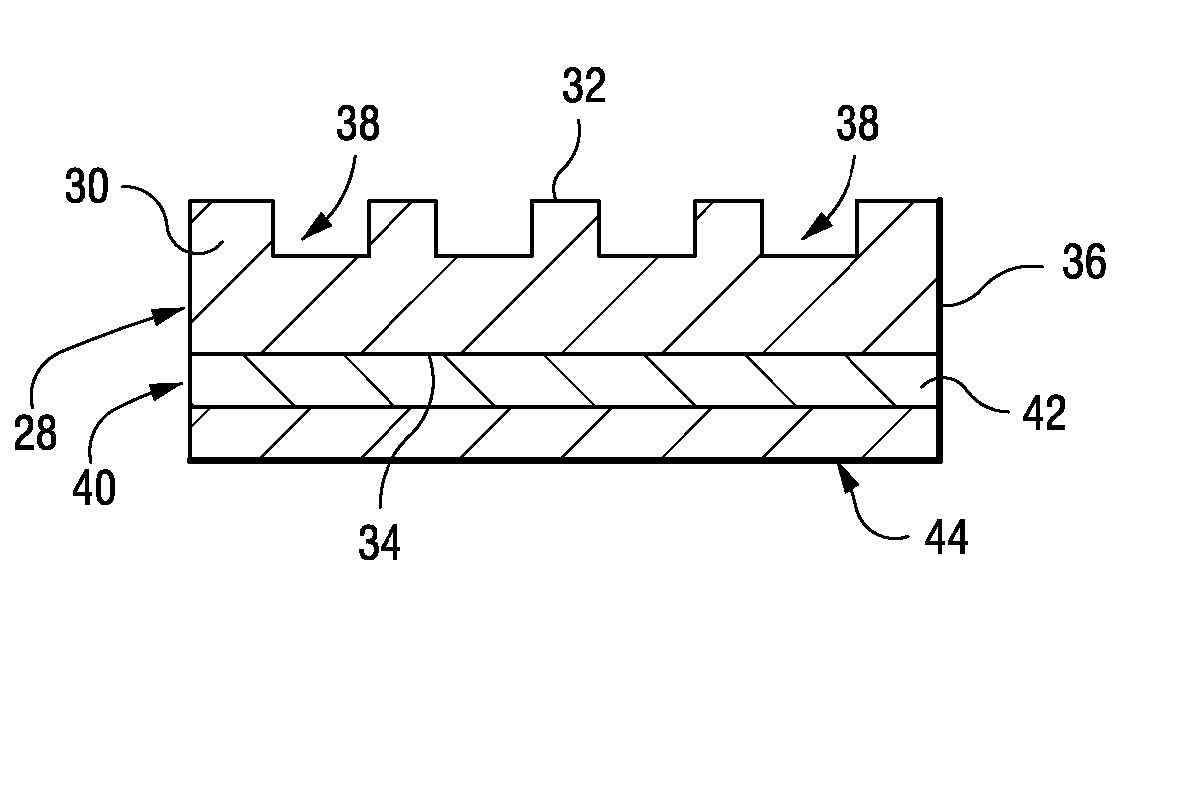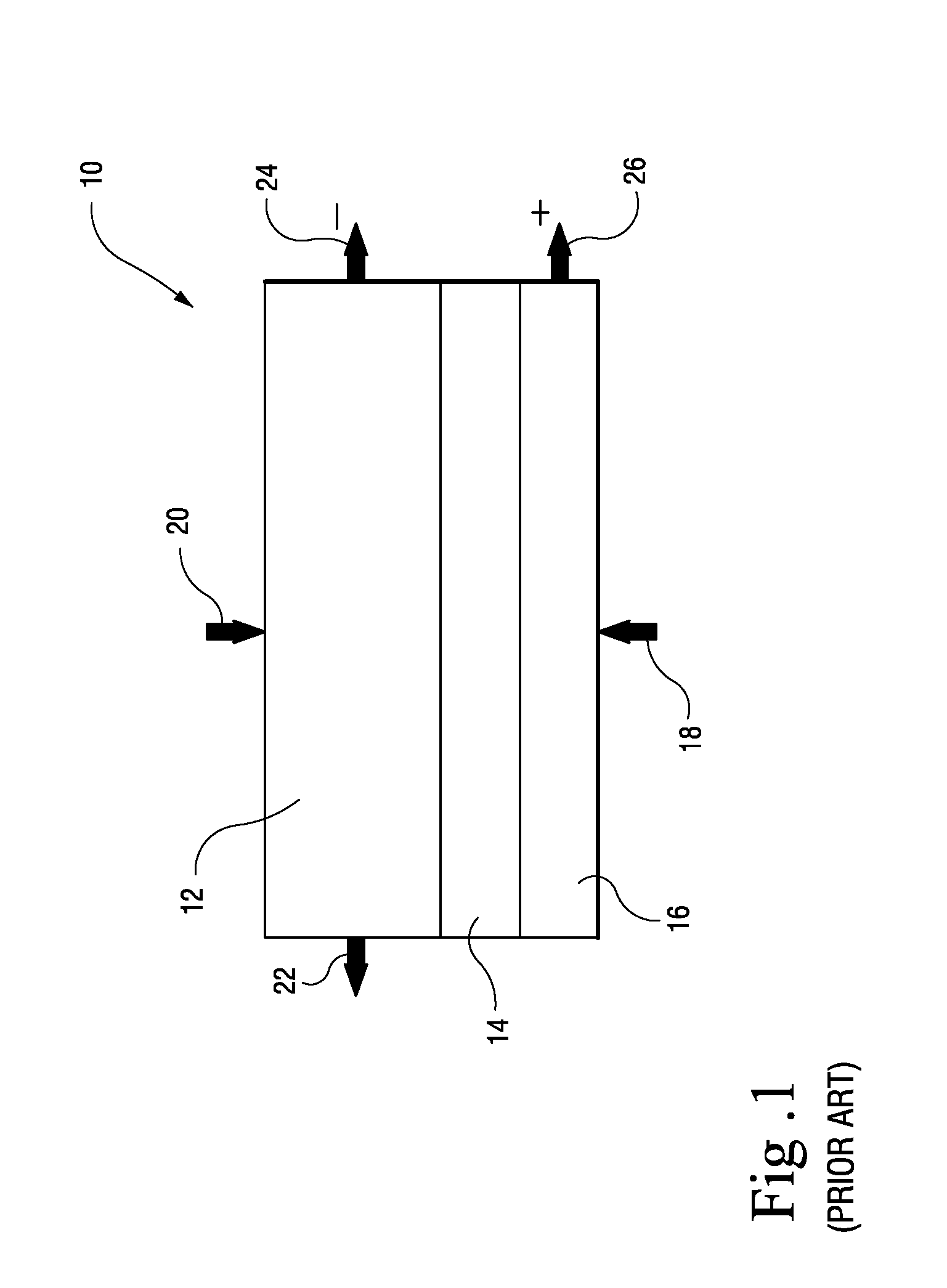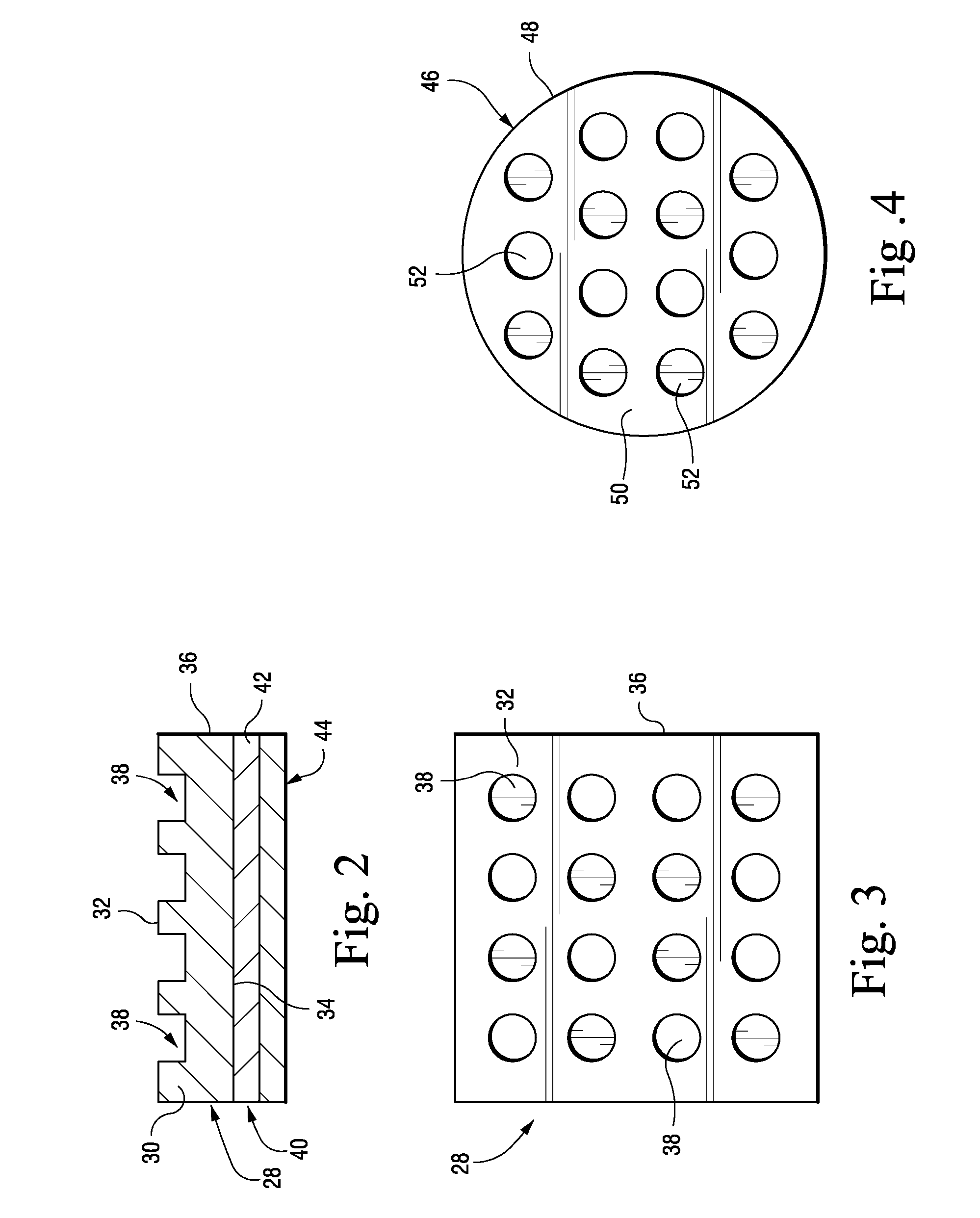Solid-state fuel cell and related method of manufacture
a fuel cell and solid-state technology, applied in the manufacture of final products, cell components, electrochemical generators, etc., can solve the problems of reduced capability for high-fuel utilization operation, increased diffusion resistance, and general density of anodes, and achieve enhanced fuel utilization during operation, increased flatness during fabrication, and applicability in construction
- Summary
- Abstract
- Description
- Claims
- Application Information
AI Technical Summary
Benefits of technology
Problems solved by technology
Method used
Image
Examples
Embodiment Construction
[0021] With reference to FIG. 1, a conventional anode-supported SOFC is shown schematically at 10 and includes an anode 12, electrolyte 14 and cathode 16. The anode 12 is significantly thicker than both the cathode and electrode in the anode-supported type SOFC. In a typical example, the cathode 16 and electrolyte 14 may have thicknesses of about 0.01 to 0.10 mm while the anode 12 may have a thickness of about 0.3 to 2 mm.
[0022] The anode 10 is a ceramic material, e.g., a nickel / zirconium oxide, and the cathode is also a ceramic material, e.g., lanthanum manganite. Both the anode 12 and cathode 16 are relatively porous, allowing gases to pass through for interaction with the electrolyte 14. The electrolyte may comprise a mixture of yttrium oxide and zirconium oxide. It will be appreciated, however, that other suitable compositions may be utilized in connection with this invention.
[0023] In an SOFC, oxygen is added via the cathode 16 as indicated by arrow 18; hydrogen and carbon mo...
PUM
| Property | Measurement | Unit |
|---|---|---|
| thickness | aaaaa | aaaaa |
| depth | aaaaa | aaaaa |
| thickness | aaaaa | aaaaa |
Abstract
Description
Claims
Application Information
 Login to View More
Login to View More - R&D
- Intellectual Property
- Life Sciences
- Materials
- Tech Scout
- Unparalleled Data Quality
- Higher Quality Content
- 60% Fewer Hallucinations
Browse by: Latest US Patents, China's latest patents, Technical Efficacy Thesaurus, Application Domain, Technology Topic, Popular Technical Reports.
© 2025 PatSnap. All rights reserved.Legal|Privacy policy|Modern Slavery Act Transparency Statement|Sitemap|About US| Contact US: help@patsnap.com



